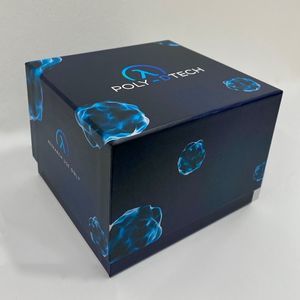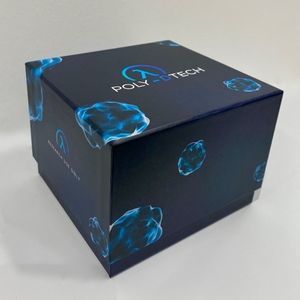
Solution reagent Bright-Dtech™antibodycell imagingfor Western blot
Add to favorites
Compare this product
Characteristics
- Type
- solution, antibody
- Applications
- cell imaging, for Western blot, for ELISA
- Tested parameter
- protein, IgG
- Storage temperature
Min.: 2 °C
(36 °F)Max.: 8 °C
(46 °F)
Description
With Bright-Dtech™, we offer you an innovative solution to have a higher detection sensitivity with easy-to-use protocols, applicable in various molecular and cellular biology techniques. They are ultra-efficient fluorescent nano-molecules with unique characteristics.
Secondary antibodies aim to detect and visualize a primary antibody that is bound to its protein of interest. Rabbit antibody is often used in applications such as ELISA, Western Blot, IHC, or cell imaging.
If you are using a primary antibody produced in rabbits, you will choose as the secondary antibody an anti-rabbit antibody produced in a species other than rabbit.
Due to lanthanide’s fingerprinting emission spectrum, Bright-Dtech™ – Nd (Infrared) can be incorporated with other Bright-Dtech™ nanoparticles to achieve multiple detection of biomarkers or proteins in the same biological sample.
Before to use Bright-Dtech™, please to check these conditions:
> It is strongly recommended not to use PBS buffer
Excitation source: 340 nm
You can use any peak of the spectra to measure your signal
Choosing the right plate reader will allow you to get the best possible results. Each piece of equipment is important.
Discover our non-exhaustive list of analysis equipment compatible with our technology:
Time-Resolved Fluorescence microplate reader (TRF or HTRF®)
Lateral flow reader
ADDITIONAL INFORMATION
WEIGHT - 0.7 kg
DIMENSIONS - 14 × 15 × 11 cm
VOLUME -
250 µl, 500 µl, 1 ml, 1,5 ml, 2 x 1,5 ml, 3 x 1,5 ml, 4 x 1,5 ml
CONCENTRATION -
10 nM
COLOR -
Infrared
COUPLED TO -
Anti-Rabbit IgG (H + L)
NANOPARTICLE -
Néodyme (Nd)
WAVELENGTH -
340ex. – 880em.
Related Searches
- Assay kit
- Solution reagent kit
- Blood assay kit
- Molecular biology reagent kit
- Immunoassay assay kit
- Research reagent kit
- Protein reagent kit
- Rapid lateral flow test
- Enzyme reagent kit
- Immunoassay rapid diagnostic test
- Virus rapid diagnostic test
- Respiratory infection test kit
- Cytology reagent kit
- Dye reagent
- Antibody
- Rapid respiratory infection test
- COVID-19 detection kit
- IgG test kit
- COVID-19 rapid diagnostic test
- Nasopharyngeal rapid diagnostic test
*Prices are pre-tax. They exclude delivery charges and customs duties and do not include additional charges for installation or activation options. Prices are indicative only and may vary by country, with changes to the cost of raw materials and exchange rates.






































